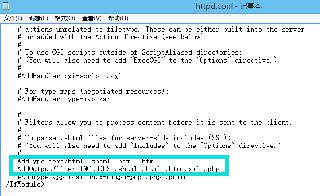Python Django view 兩種return的實現方式
1.使用render方法
return render(request,’index.html’)
返回的頁面內容是index.html的內容,但是url不變,還是原網頁的url,(比如是login頁面的返回方法,跳轉后的url還是為login) 一刷新就返回去了
2.使用redirect方法
return redirect(request,’idnex.html’)
直接跳轉到index.html頁面中,url為跳轉后的頁面url
補充知識:Django的View是如何工作的?
View (視圖) 主要根據用戶的請求返回數據,用來展示用戶可以看到的內容(比如網頁,圖片),也可以用來處理用戶提交的數據,比如保存到數據庫中。Django的視圖(View)通常和URL路由一起工作的。服務器在收到用戶通過瀏覽器發來的請求后,會根據urls.py里的關系條目,去視圖View里查找到與請求對應的處理方法,從而返回給客戶端http頁面數據。
當用戶發來一個請求request時,我們通過HttpResponse打印出Hello, World!
# views.pyfrom django.http import HttpResponsedef index(request): return HttpResponse('Hello, World!')
下面一個新聞博客的例子。/blog/展示所有博客文章列表。/blog/article/<int:id>/展示一篇文章的詳細內容。
# blog/urls.pyfrom django.urls import pathfrom . import viewsurlpatterns = [ path(’blog/’, views.index, name=’index’), path(’blog/article/<int:id>/’, views.article_detail, name=’article_detail’),]# blog/views.pyfrom django.shortcuts import render, get_object_or_404from .models import Article# 展示所有文章def index(request): latest_articles = Article.objects.all().order_by(’-pub_date’) return render(request, ’blog/article_list.html’, {'latest_articles': latest_articles})# 展示所有文章def article_detail(request, id): article = get_object_or_404(Article, pk=id) return render(request, ’blog/article_detail.html’, {'article': article})
模板可以直接調用通過視圖傳遞過來的內容。
# blog/article_list.html{% block content %}{% for article in latest_articles %} {{ article.title }} {{ article.pub_date }}{% endfor %}{% endblock %}# blog/article_detail.html{% block content %}{{ article.title }}{{ article.pub_date }}{{ article.body }}{% endblock %}
以上這篇Python Django view 兩種return的實現方式就是小編分享給大家的全部內容了,希望能給大家一個參考,也希望大家多多支持好吧啦網。
相關文章:

 網公網安備
網公網安備